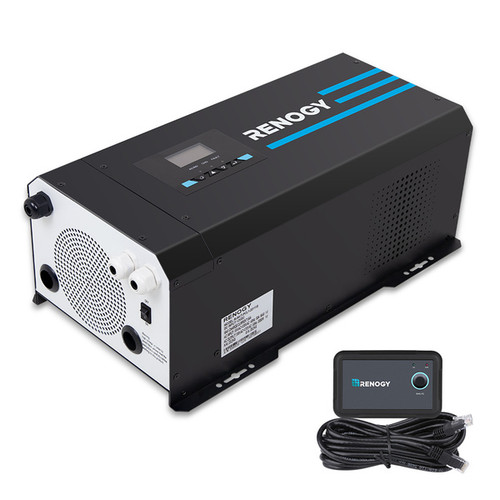
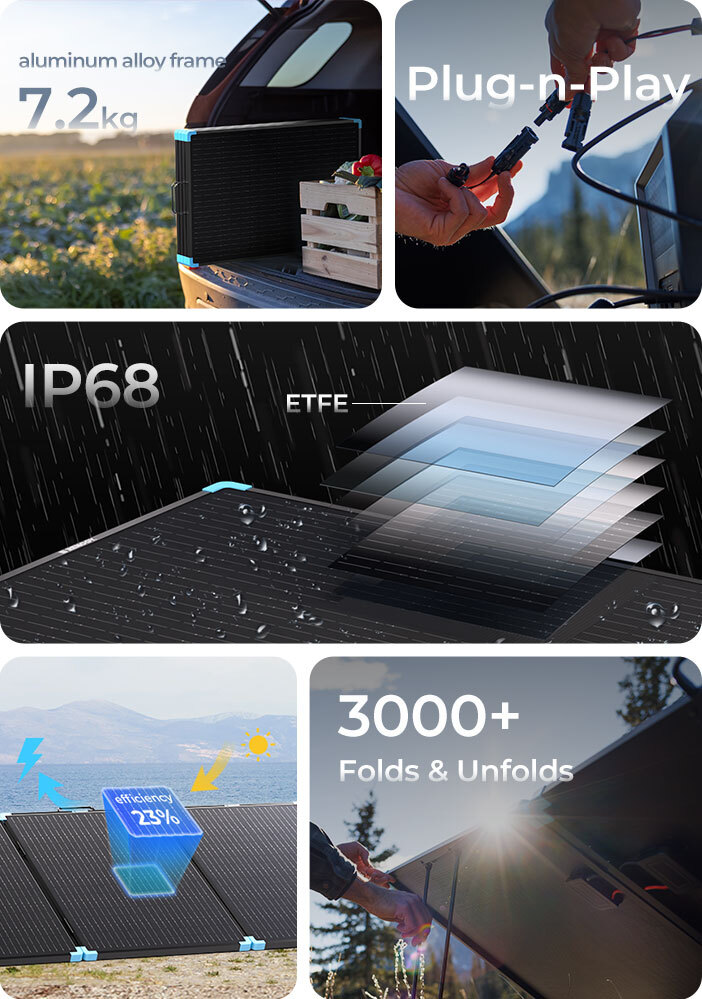




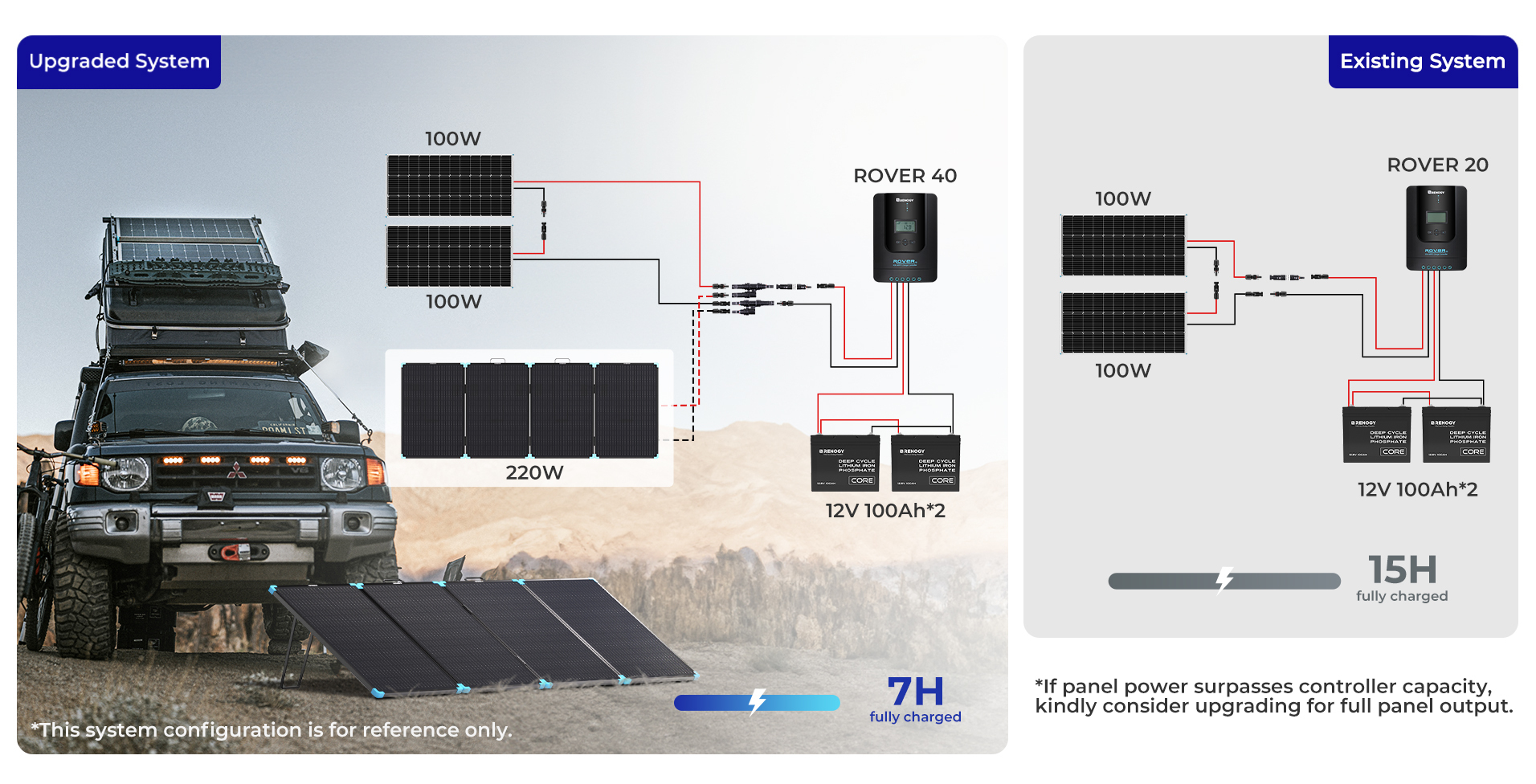





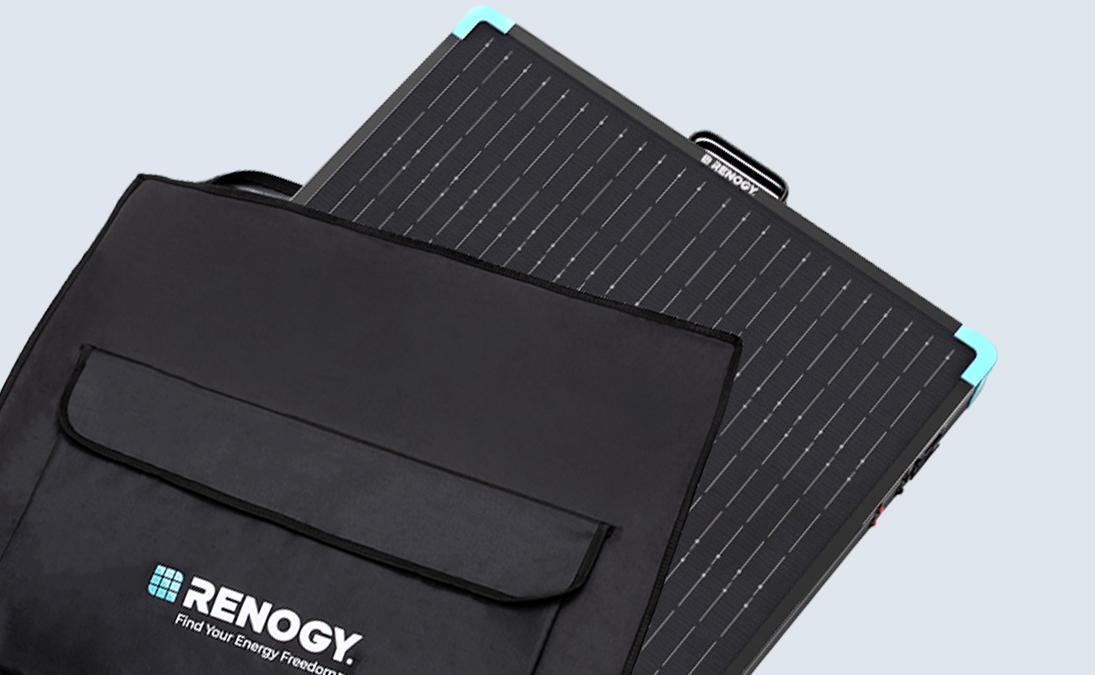



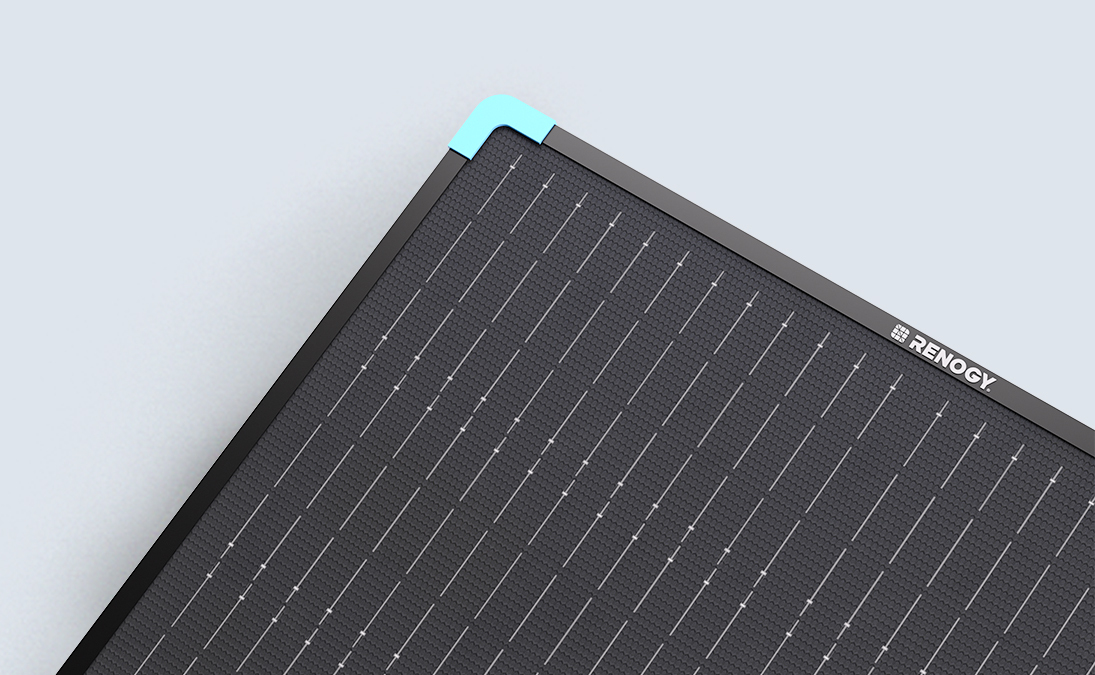

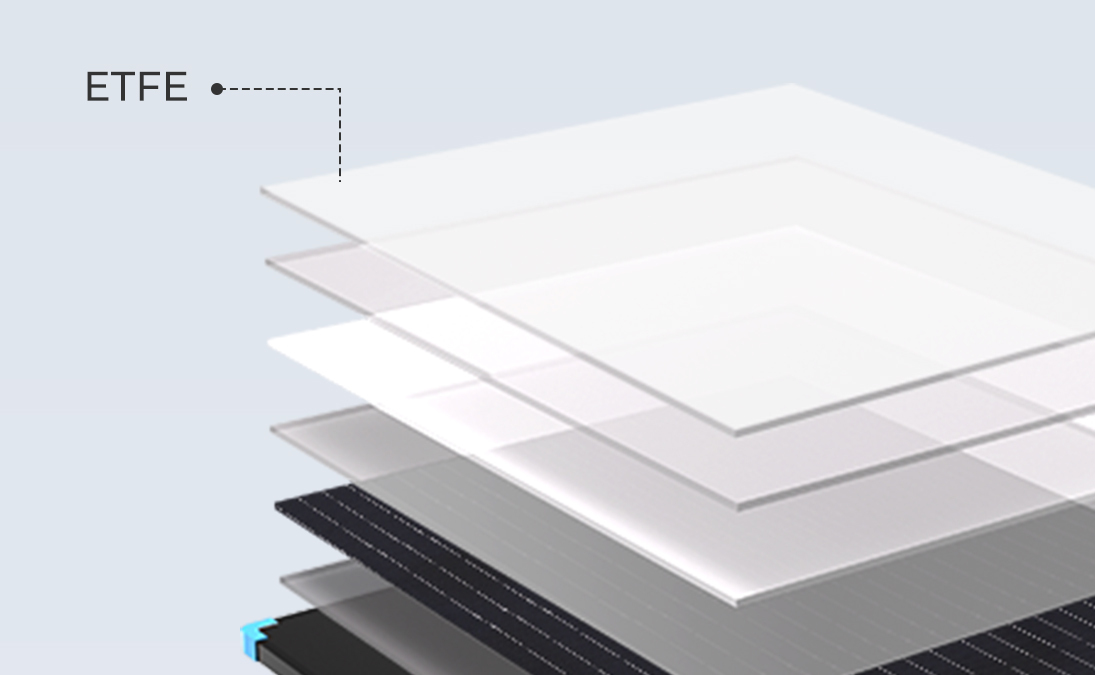

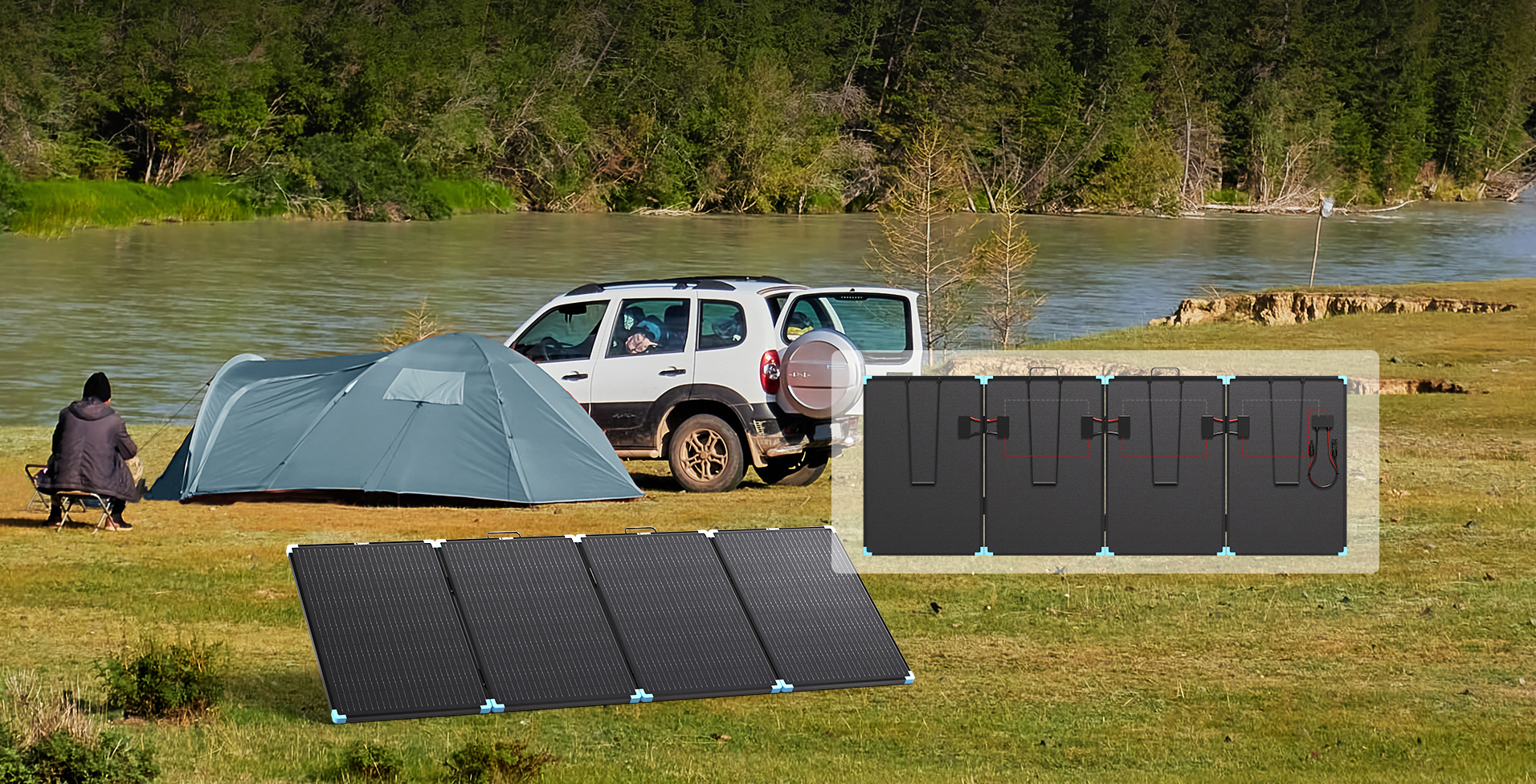
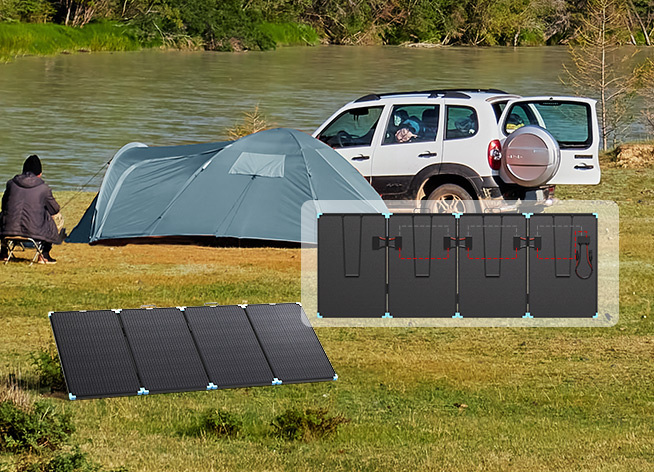


Package Includes
- 1 x 220w portable solar panel
- 1 x User Manual
- 1 x Ewarranty card
| RENOGY 200w EFLEX portable solar panel | |||
|---|---|---|---|
| Max Power at STC | 200 W | Open Circuit Voltage | 23.40V |
| Short Circuit Current | 10.50A | Optimum Operating Voltage | 20.16V |
| Optimum Operating Current | 9.92A | Cell Efficiency | >22.6% |
| Operating Temperature | ’14°F to 149°F(-10℃ to +65℃) | Dimensions | 25.0 x 21.1 x 2.2 in / 635 x 536 x 55 mm(fold),94.1 x 21.1 x 0.2 in / 2390 x536 x 4 mm (unfold) |
| Weight | 17.6 lbs. / 8.0 kg | ||
| Warranty | Material and workmanship warranty | 1 | |
| Certifications | CE and RoHS compliant, FCC, Manufactured in a Certified ISO 9001 Facility, CA65, PES | YES | |
To regulate current, a solar panel must be connected to a charge controller, while the electrical power can be stored by connecting it to a battery. To wire the solar panel(s) and charge controller, you will need adapter kit cables. Finally, tray cables are necessary to connect the charge controller to a deep-cycle battery.
Simply put, on-grid solar power equipment (like solar panels or arrays) is connected to the electrical grid. On the other hand, off-grid equipment entails systems that are not connected to the grid. Instead, they store the power that is generated for future use. The latter offers several benefits. First, it is portable and hence, can be utilized when travelling. Moreover, off-grid systems are not affected by grid blackouts.































